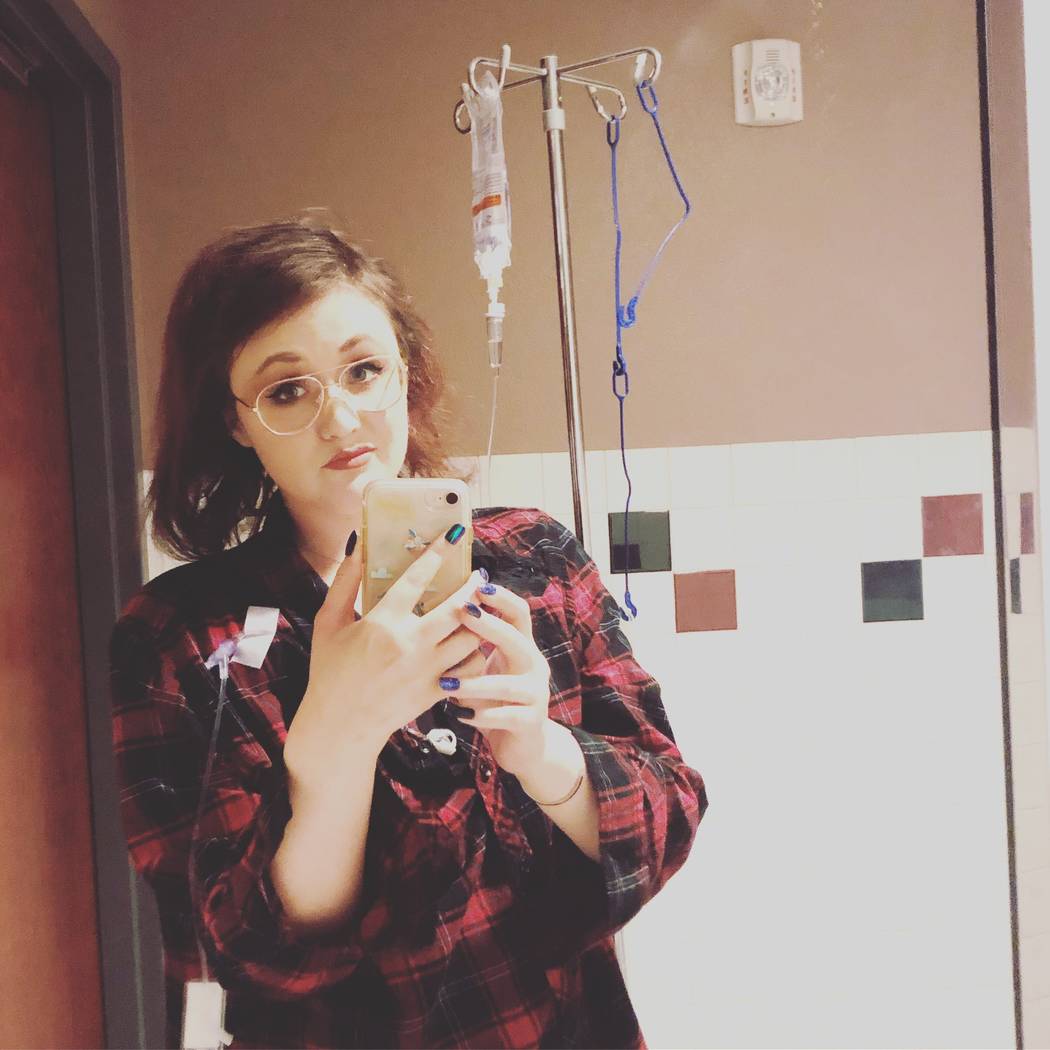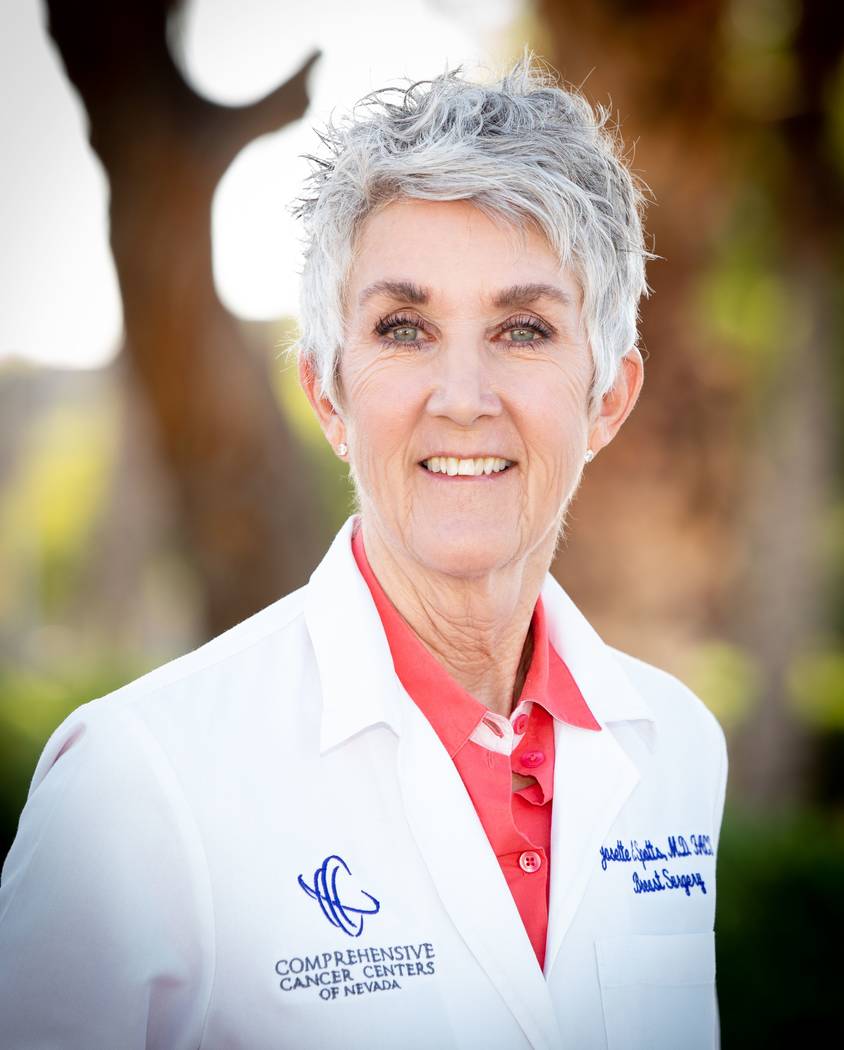Nipple-sparing mastectomy an option for some patients
In January, Dianna Cross found a small lump in her breast. With no history of cancer in her family, she was shocked to learn she had triple-negative breast cancer. That small lump was aggressive with a 91 percent growth rate. She took immediate action.
“I was in a fog,” the mother of two said. “I was thinking about survival, about the surgery. How do I get this to not come back?”
For the next year, many decisions would be made for her based on the type of cancer she had. However, one bright spot came from an unexpected source — her surgeon.
Because her breasts are small, she was identified by Josette Spotts, breast surgery specialist at Comprehensive Cancer Centers of Nevada, as a good candidate for bilateral nipple-sparing mastectomy.
“There are so many things you are presented with, a lumpectomy, mastectomy,” Cross said. “Being able to keep my nipples made it better somehow. I was keeping a part of me that would help me be comfortable with myself after going through all of this terrible stuff.”
“It’s best for small-breasted women because the farther the nipple is from the blood supply, the greater the risk that it will not survive and get enough blood supply,” Dr. Spotts said.
The best candidates for this surgery are women whose tumor does not involve the nipple or the tissue under the areola, those whose tumors are surrounded by a clear margin of tissue that is cancer-free and those who have not been diagnosed with inflammatory breast cancer or advanced breast cancer.
The surgical advancement for patients undergoing removal of their breasts has helped local women in their recovery to feel more empowered after surgery. A small incision is made, and all of the breast glandular tissue is then removed from beneath the overlying skin and attached nipple.
Traditionally, the nipple-areola complex is not preserved after the breast tissue is removed to take out cancerous tissue or to reduce the risk of a future cancer diagnosis. With the nipple-sparing mastectomy, the tissue beneath the nipple is immediately tested. If it is found to be clear of cancerous cells, it is spared and reattached after reconstruction surgery.
An incision is made under the fold of the breast and near the areola that extends toward the outer portion of the breast. A standard mastectomy removes the entire breast, nipple and areola.
The remaining nipple does not have sensation, but aesthetically it is much more natural than alternatives, such as a tattoo, which was important to Cross.
Cross opted for the nipple-sparing mastectomy after researching with her oncologist and conferring with Spotts.
“It was beautiful to have a wonderful team of doctors in line and all with the same goals and that they all agreed it was a good option for me,” she said. “It’s hard enough to lose a part of you, but it’s just tissue, and we get to live longer. But having the nipple, it’s something that is comforting. “
Cross had her surgery July 23 and was relieved to learn one week later that there was no evidence of the disease and she would not need to undergo radiation treatment. In a few months, she will receive implants.
“I had to go through this terrible, terrible thing, but we caught it early enough to where it’s not a bad thing,” she said. “Every step of the way is unnatural, so being able to keep the nipple makes you feel some control.”
She does offer advice for anyone who recently has been diagnosed.
“Listen to your doctors and stay off the internet,” Cross said.
In July 2018, Jilliene Jaeger was surprised to find a large lump in her breast that was tender. The 28-year-old teacher was preparing to move into a new apartment and start a position at Bishop Gorman High School in the theater department.
But she took the time to get a mammogram and address the painful lump. Within 10 days of discovering the mass, she was diagnosed with triple-positive breast cancer.
“I was shocked, I was scared and had no idea where to even start,” she said. “It was a terrible, terrible time.”
The team at Comprehensive Cancer Centers walked her through the complicated and arduous process. After undergoing a round of chemotherapy to reduce the mass, she opted for a double mastectomy.
“I’m young, so I wanted it to look as normal as possible and I wanted to make sure the cancer didn’t come back,” she said. “It’s a hard decision. And so many decisions are made for you. You aren’t in control of a lot.”
The chemotherapy wore her down but didn’t interrupt her life. She continued to work and wore cold caps during treatment to save her hair. After consulting Dr. Spotts, she opted for the nipple-saving surgery.
“I was afraid of the surgery, what it would look like, what I would look like,” Jaeger said.
The surgery was grueling, with drainage tubes and expanders to prepare her for the reconstruction surgery she completed in September.
“It will look almost the same, like a regular breast,” Jaeger said. “That helps with dating, and it helps me feel more confident.”
The advancements in surgical procedures for breast cancer such as this nipple-saving surgery are hopeful and helpful.
“For the younger population, it is important,” Spotts said. “It really is a big deal in society, and for some women it makes them feel more confident, more themselves after all that they have gone through.”





























